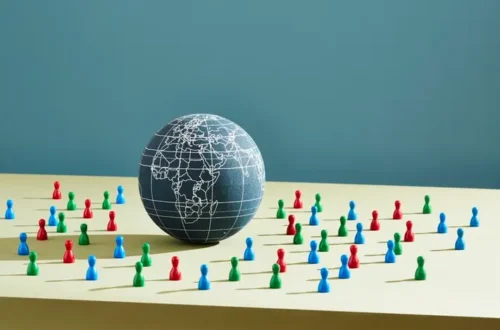Expanding a business globally is like stepping into a vibrant, unfamiliar world filled with opportunity—and a few hidden traps. I remember when my friend Sarah, an HR manager, was tasked with opening her company’s first office in Japan. She thought it would be a breeze—after all, the company had a solid playbook from its U.S. operations. But within weeks, she was grappling with cultural nuances she hadn’t anticipated, from rigid workplace hierarchies to unspoken expectations around gift-giving. Her story isn’t unique. Cultural barriers can make or break a company’s global ambitions, but with the right approach, they’re not insurmountable. This article dives into the challenges of cultural barriers in global expansion and offers practical strategies to overcome them, drawing from real-world examples and expert insights.
Why Cultural Barriers Matter in Global Expansion
Cultural barriers aren’t just about avoiding a faux pas at a business dinner—they’re about understanding the invisible rules that shape how people work, communicate, and trust. Ignoring these can lead to missteps that cost time, money, and reputation. Whether you’re a small startup eyeing international markets or a multinational setting up shop in a new region, cultural fluency is your secret weapon.
The Cost of Cultural Missteps
A single cultural oversight can derail your expansion. For instance, Walmart’s 2006 exit from Germany was partly due to its failure to adapt to local shopping habits and employee expectations, costing the company billions. Cultural misalignment can lead to unhappy employees, confused customers, and even legal troubles.
The Opportunity of Cultural Alignment
On the flip side, companies that embrace cultural differences thrive. Take McDonald’s, which tailored its menu to include vegetarian options in India and halal items in the Middle East. This adaptability has made it a global powerhouse. Understanding culture isn’t just about avoiding mistakes—it’s about building trust and loyalty.
Key Cultural Barriers in Global Expansion
Navigating cultural barriers requires recognizing the specific challenges you’ll face. Here are the most common hurdles businesses encounter when expanding internationally.
Language and Communication Gaps
Language isn’t just about words; it’s about tone, context, and non-verbal cues. Misunderstandings can arise even when everyone speaks English. For example, in high-context cultures like Japan, indirect communication is valued, while Americans often prefer bluntness.
Workplace Norms and Expectations
Workplace culture varies widely. In Sweden, flat organizational structures encourage open dialogue, while in South Korea, hierarchy dictates who speaks when. Ignoring these norms can lead to disengaged employees or ineffective leadership.
Legal and Regulatory Differences
Every country has unique labor laws and business regulations. In France, for instance, the 35-hour workweek is standard, and ignoring it can lead to penalties. HR teams must ensure compliance while aligning with company policies.
Family and Social Dynamics
When relocating employees, consider their families. A trailing spouse struggling to adapt to a new culture can impact an employee’s performance. Companies like Novartis offer relocation support, including language classes and expat community connections, to ease this transition.
Strategies to Overcome Cultural Barriers
Overcoming cultural barriers requires proactive planning and a commitment to learning. Here are actionable strategies to ensure your global expansion succeeds.
Invest in Cultural Training
Before sending employees abroad, provide cultural training. This isn’t just about learning dos and don’ts—it’s about understanding values. For example, training on Chinese business etiquette can teach employees to show respect to government officials, avoiding unintentional offense.
Hire Locally, Train Globally
Deciding whether to hire locally or transfer employees is critical. Local hires bring cultural expertise but may need training in your company’s values. Transferred employees need cultural immersion to avoid imposing home-office norms.
Build a Flexible Company Culture
Your company culture should be a bridge, not a barrier. Encourage open dialogue about what works in each region. When Starbucks expanded to China, it adapted its store designs to reflect local aesthetics, blending global brand identity with regional appeal.
Support Employee Families
Relocating employees need more than a job—they need a life. Offer resources like school placement assistance or spousal job support. This small investment can prevent turnover and boost morale.
Leverage Technology for Communication
Use tools like Slack or Microsoft Teams to bridge language and time-zone gaps. Translation plugins and cultural sensitivity training modules can also help teams collaborate effectively.
Comparison: Local Hire vs. Transferred Employee
Choosing between hiring locally or transferring employees is a pivotal decision. Here’s a breakdown to guide your choice.
| Factor | Local Hire | Transferred Employee |
|---|---|---|
| Cultural Knowledge | Deep understanding of local norms | May require extensive cultural training |
| Company Loyalty | May need time to align with company values | Already aligned with company culture |
| Cost | Lower relocation costs | Higher costs for relocation and training |
| Adaptability | Faster adaptation to local market | May struggle with local nuances |
Pros and Cons of Each Approach
- Local Hire
- Pros: Immediate cultural fit, lower costs, local network.
- Cons: May lack understanding of company culture, potential loyalty concerns.
- Transferred Employee
- Pros: Strong alignment with company goals, trusted expertise.
- Cons: Higher costs, risk of cultural disconnect, family adjustment challenges.
Real-World Examples of Cultural Success and Failure
Stories of triumph and failure highlight the stakes of cultural competence. Let’s look at two contrasting cases.
Success: IKEA in Japan
IKEA’s first attempt to enter Japan in the 1970s failed due to cultural mismatches, like offering oversized furniture for small Japanese homes. When it re-entered in 2006, IKEA invested in market research, adapting its offerings to suit compact living spaces and local tastes. Today, it’s a beloved brand in Japan.
Failure: Home Depot in China
Home Depot’s 2012 exit from China was a textbook case of cultural missteps. The company assumed its DIY model would resonate, but Chinese consumers preferred professional services over self-service. This oversight led to store closures and a retreat from the market.
People Also Ask (PAA) Section
Here are answers to common questions about cultural barriers in global expansion, sourced from Google’s PAA feature.
What are cultural barriers in business?
Cultural barriers are differences in values, norms, and behaviors that can hinder effective communication and operations. These include language gaps, workplace expectations, and social customs that vary across countries.
How can businesses overcome cultural barriers?
Businesses can overcome cultural barriers by investing in cultural training, hiring local talent, and adapting company practices to align with local norms while maintaining core values.
Why is cultural understanding important in global expansion?
Cultural understanding builds trust, improves employee morale, and enhances customer satisfaction. It prevents costly mistakes and ensures compliance with local regulations.
Where can I get cultural training for my team?
Look for providers like Berlitz or CultureWizard, which offer tailored cultural training programs for businesses expanding globally.
What are the best tools for cross-cultural communication?
Tools like Slack, Microsoft Teams, and Google Translate facilitate communication across languages and time zones. For in-depth cultural insights, platforms like Hofstede Insights are invaluable.
Practical Tools and Resources for Global Expansion
To navigate cultural barriers, leverage these tools and resources tailored for global expansion.
Best Tools for Cross-Cultural Success
- Hofstede Insights: Offers cultural dimension analyses to understand workplace values across countries.
- CultureWizard: Provides online training modules for cultural competence.
- Google Translate: Useful for quick translations, though human interpreters are better for nuanced communication.
- Trello: Helps manage cross-cultural teams by organizing tasks across time zones.
Where to Find Cultural Expertise
- Consulting Firms: Companies like Deloitte offer global HR consulting.
- Local Chambers of Commerce: Connect with local experts for market-specific advice.
- Expat Communities: Platforms like InterNations help relocated employees integrate.
FAQ Section
How do cultural barriers affect global business expansion?
Cultural barriers can lead to miscommunication, employee dissatisfaction, and market misalignment, potentially derailing expansion efforts. Addressing them ensures smoother operations and better market fit.
Should I hire locally or transfer employees for global expansion?
It depends on your goals. Local hires offer cultural expertise and lower costs, while transferred employees bring company loyalty but may need cultural training. A hybrid approach often works best.
What are the best ways to learn about a new market’s culture?
Engage with local consultants, conduct market research, and participate in cultural training. Platforms like Hofstede Insights and CultureWizard provide data-driven insights.
How can technology help overcome cultural barriers?
Tools like Slack, Microsoft Teams, and translation apps bridge communication gaps. Cultural training platforms also help teams understand local norms and expectations.
Why do some companies fail in global expansion?
Many fail due to cultural oversights, like ignoring local consumer preferences or workplace norms. Thorough research and adaptability are key to avoiding these pitfalls.
Final Thoughts
Global expansion is a thrilling journey, but it’s not without its challenges. Cultural barriers, from language gaps to differing workplace norms, can feel like navigating a maze blindfolded. Yet, with the right strategies—cultural training, local hires, and family support—you can turn these barriers into bridges. My friend Sarah learned this the hard way in Japan, but by listening, learning, and adapting, her company’s office is now thriving. As you plan your global venture, embrace the differences, invest in understanding, and watch your business flourish in new markets. Ready to take the leap? Start with a cultural audit of your target market, and you’ll be one step closer to global success.





